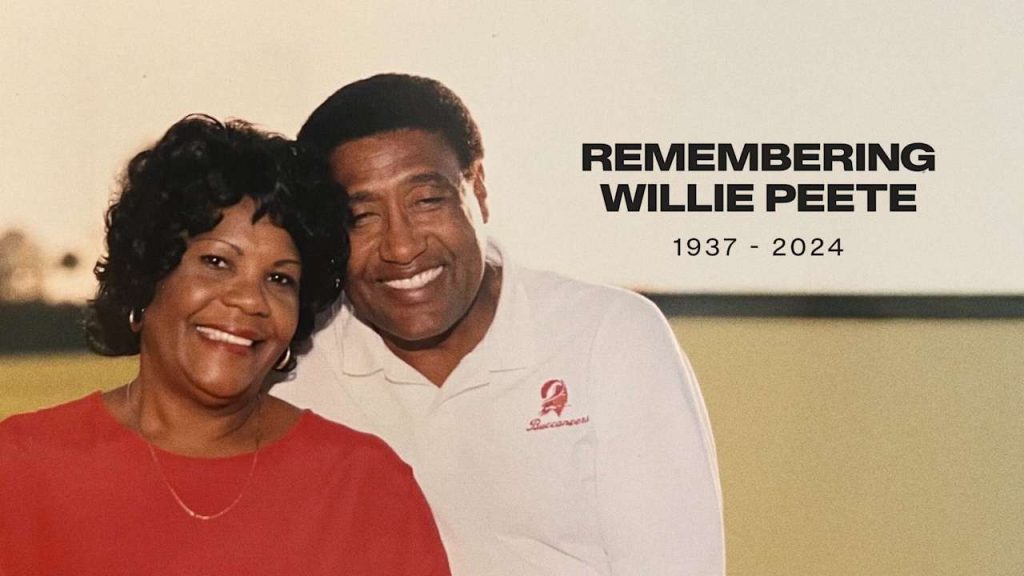Transcript Mike McDaniel’s Media Availability
(Do you expect to see OL Austin Jackson at practice today? And as part of a two-for-one, I was going to ask you about T Greg Little – how you thought he did last Sunday and what you like about his skillset?) – “We’ve decided to put Austin (Jackson) on short-term IR, which it was kind of close. Like I’ve articulated, ankles are kind of finicky, but really what we wanted to avoid after we took all consideration into effect was that we don’t want it to linger for the whole season. We really like the work that he’s gotten done, so we want to protect him from that. And then as a result, I’m glad you asked about Greg Little because I’m very, very confident in him. He did a great job jumping in there and he’s really made the most of all of his reps. I think the guys are confident. As a matter of fact, I know they’re confident in him, as well as the coaching staff is, so it’ll be a great opportunity for him in this game.”
(As far as T Terron Armstead, do you have confidence he’ll be able to go on Sunday?) – “I think I have confidence that he’s limited today and is questionable for the game. (laughter)“
(Do you anticipate that leading all the way up to the game or…?) – “I think it just depends. If he’s worried about it, it’ll go all the way up to the game, because he will do whatever it takes to play. If he’s feeling pretty good about it, it won’t, basically. He’s a guy that has shown time and again in his career, that he’s been able to put together a really good game by piecing together practice. And he’s showed me that firsthand with his vet management stuff that we’ve done with him and then when he does get out there, it’s obvious to me and all of his teammates that he deliberately approaches every rep that we have and gets reps and gets stuff out of things, even when he’s not doing it. So I know if he can, he will.”
(I don’t think any of us are doctors, but I’m curious, just with T Terron Armstead, you’ve got a guy like Justin Houston potentially on other side – how much does his injury in particular affect his mobility and whether that’s a factor or if it’s more pain for him?) – “For him, it would be that it’s – it’s funny. He’s got a high pain tolerance, especially in games. He’s one of those guys that does a great job in practice, but his spirit and energy is different in games because he loves playing games. He’s played games with worse injuries, I think, but what we don’t want to do is set stuff back further along in the season. I don’t think he’ll be in a position to where his mobility would be too constricted. He’s played with injuries before and has all those veteran tricks. If you can’t move as far, how to kind of balance it out. So I know if he’s able to go, it will be full steam ahead with him, just because that’s the way he is.”
(With the injury situation – will that cause you to bring up more offensive linemen or how would you adjust there?) – “No, that will probably happen here in the next 24 hours. We still have an opportunity on the field to iron that out, but I feel very good about the guys that we do have and the different possibilities that we can kind of go with. Another reason that position versatility is outstanding, too, because we have guys that can play all over the place within the line. So as you saw on this past Sunday, we have guys that can come in, that can play very capable without us missing a beat. That’s to the credit of the coaching staff – (Offensive Coordinator) Frank Smith and (Offensive Line Coach) Matt Applebaum and the guys and to the players in general.”
(We saw yesterday DT Christian Wilkins and S Brandon Jones pop up as limited with injuries since Wednesday. I know if you get treatment you have to be put on a list. Are those of any concern with regard to Sunday for those two starters?) – “Well, you seem to be on the injury report. So limited, right? And so questionable. I guess I’d ask, do you find questions concerning? (laughter) No, what you don’t want to do is like, you’re hoping for the best, but you’re of the mindset of preparing for the worst. Both of those guys are very, very dependable, and I can promise you that the only way they wouldn’t play as if they thought they’d let the team down. Now, these at the beginning of the week, these weren’t the deal. You go through practice and a night’s rest and stuff, and some guys come back with stuff. So we were hoping it’s not a big deal and we’re hoping it doesn’t involve Sunday. But that’s why it’s questionable, because you just don’t know. I’m already getting used to this as a head coach. You’ve got to be able to adjust.”
(What did you think of OL Connor Williams’ first NFL regular season game as a center?) – “I thought he did some really cool stuff. I was very, very happy with his play. The biggest thing with him is he knows that he can play the position very well. I can tell internally. So he’s demanding a lot of himself and at the center position, your demands aren’t just physical and so he is very prideful in all the calls that he makes. My biggest thing to him is to make sure that he doesn’t lose sight of the stuff he’s putting on tape. When he’s getting – if you talk to him, he’ll tell you the first three things that went wrong and he should be gaining confidence. It’s his coach’s job and my job to make sure that his confidence is where it should be because it should be pretty high because he’s doing some really good stuff at a high level and it’s amazing that he’s come this far in a short period of time, so I’m fired up for him to continue to get opps.”
(What do you like about RB Chase Edmonds as a receiver?) – “A lot to like. His ball skills for one. So you know, running backs get different matchups than other players as an offensive skill position player, and it can really open up your offense if you can involve your halfback in the passing game. His ball skills are outstanding, so he can locate the ball. He can also understand space. He’s a good route-runner because not only is he quick and he runs out of his breaks, but there’s an element of composure that you have to have, especially when you’re a running back running routes, whether you’re coming from the backfield or on the line of scrimmage. Because whatever route you’re running, there’s a depth to it that’s tied into the quarterback’s timing and when he’s ready to throw, and it’s one thing when you’re getting handoffs all the time or checking protection, but then now you’re running a route and you have to have a composure and timing feel to do it appropriately in the when and the time of the play. So he’s a very cerebral, calculated, player that also happens to be athletic and a matchup issue for opposing defenses, so he had a couple huge, huge – I think he had three third downs this past game that the game is different if he doesn’t make those plays. And that it happened to be third down this past game. On first and second down, it opens up your offensive playbook as well. So it allows you to feature people and also make your offense a little more multiple with your formations and presentations.”
(With QB Tua Tagovailoa, you talked about wanting to see his confidence grow. I’m curious, can you expand on that, what that looks like for you as a coach? How do you gauge when a player’s confidence is up and down?) – “I try to stay – I see the gauging process (as) instrumental in my job. So I’m constantly studying the players, not just their play, but I try to learn a lot about them in a short period of time because I feel like to do my job well, I need to. So with Tua (Tagovailoa) specifically, I can tell now, when there’s a result, and sometimes the result is a completion, but I can tell that he’s not happy with the way that play happened. So what I want to see – if he’s right with his confidence, which I know he’s getting there, then it would be harder for me to tell that he wasn’t happy with the last play because it’s an understanding of ‘Yeah, I didn’t do that as good. Oh well, I’ll do it perfect next time,’ is the way I want him to be because you get to a prerequisite kind of area in your game, where you’re trying to fine-tune stuff and he’s a perfectionist. So I want his confidence to outweigh his perfectionism, or whatever that word would be, so that he can continue along his journey, but also be a little more present in reality. I think he – the reality is he’s doing very good things on the football field, and while he’s trying to get better, I just want to make sure that he doesn’t lose sight of those things which we’ve talked about, and I’m excited about where he’s going with that.”
(Staying on QB Tua Tagovailoa real quick, he had a comment earlier this week about height and vision and how that kind of all pairs together. You’ve obviously worked with tall quarterbacks, shorter quarterbacks, running quarterbacks, pocket quarterbacks, all that stuff. I just wanted to get your perspective on what QB Tua Tagovailoa said and how height and vision affects your field vision?) – “That’s another example of why I really appreciate coaching Tua (Tagovailoa) and think that he has a chance to continue to get better for years and years over the course of his career, because he is – being with all sorts of shapes and sizes of quarterbacks from 6-foot to 6-5 and everything in between, the one thing I do know is that every quarterback struggles to see at some point in time because there’s a lot of things going on. There’s locating layers of defenders that you’re looking at from your vantage point, but you’re having to distinguish, ‘Are they five yards deeper than each other?’ There’s 6-5 dudes that are standing like this in your face (raises his arms above his head), and all quarterbacks struggle to see; most quarterbacks don’t admit it. So that’s a big deal when you when you break that down, because what that means is now we can have a coach-player relationship and have an opportunity to get better. Because when he says, ‘Yeah, I didn’t see something,’ I know he means it. And there’s a lot of times you’ll be coaching a quarterback and you’ll be like, ‘Why didn’t you?’ (And he says,) ‘I don’t know.’ That’s not him, which is why he’s been able to make all the growth and the steps in his game within this offense in one offseason. So that’s something that there’s different tools and tricks that you can learn within the given concepts and stuff that that you’re doing, whether you’re under center, or you’re in shotgun, or you’re in pistol, or whatever, as well as that communication is integral for me to make sure to adapt to, ‘Hey, these plays in these pockets, it’s hard for me to see something.’ It’s very, very normal – just not a lot of people are willing to talk about it. And generally, I believe honesty and being secure in yourself to admit stuff gives you your best chance to maximize whatever you are, whether that’s in business or just in life as a person.”
(I noticed this past game you guys used WR Tyreek Hill quite a bit on motion pre-snap. I think the number was 28 percent, which is like double what he had in Kansas City. Not to go too deep into scheme, but I’m curious beyond just the speed element, what advantage getting him on the move of that snap does to a defense for your offense?) – “Well, just motioning in general, from a starting point, defenses have to defend as a group. We prioritize motioning so that they have to communicate. If you motion one player, it’s a low cost on offense. But it can change – there’s defenses that have double calls, you go slot to pro, and they have to re-close stuff at times. So that’s one of the reasons – it’s not just to do it, but one of the reasons it’s such a big part of our offense is because we believe if we train it, we can stress defenses in that way. With Tyreek (Hill) in particular, that’s something that I think it’s safe to say that if you’ve been coaching in the National Football League in the last 10 years, or even 20 (years), you know that when you play the Patriots that they’re going to do their best to take away who they view as your primary player. When you’re playing teams like that, it only helps – it doesn’t hurt – when in your motion plan, you’re moving him around, because if they’re going to try to double somebody, that occupies two people’s eyes and all that stuff. We motion all the time anyway, but with no games as a group and us not having anything on tape, the one thing we could have taken as an educated guess was that they were going to have some attention on Tyreek. So when we feel that way, we’ll take advantage of it in a multitude of ways and one of them was motion.”
(A housekeeping thing – how do you determine who gets a veteran’s day off and which players have regular veteran’s days off?) – “It’s the classic open-ended, case-by-case, classic third-person Mike McDaniel. You’re weighing a lot of stuff. The ultimate thing is what’s the best thing for the team, which means what’s the best thing for that player? How much work do they need? What are the residual effects of said work? All of these things are – that’s why I’ll never have a blanket statement, or answer, or philosophy, on that because I honestly believe in treating people differently in that degree. That people place themselves in the positions they’re in ultimately, so you adjust off that. If they’re really on their details of their game and they’re a veteran player, it doesn’t make much sense to practice them. It’s more doing so to get the best out of the player. And generally, the guys that get vet days are generally guys that can handle it and perform and don’t need that extra day, which is something that’s not just here. It’s something I’m used to doing with guys that are in their second or third contracts, because they know how to get their job done and what it takes if you miss a Wednesday, or you miss a Friday, or whatever you miss.”



